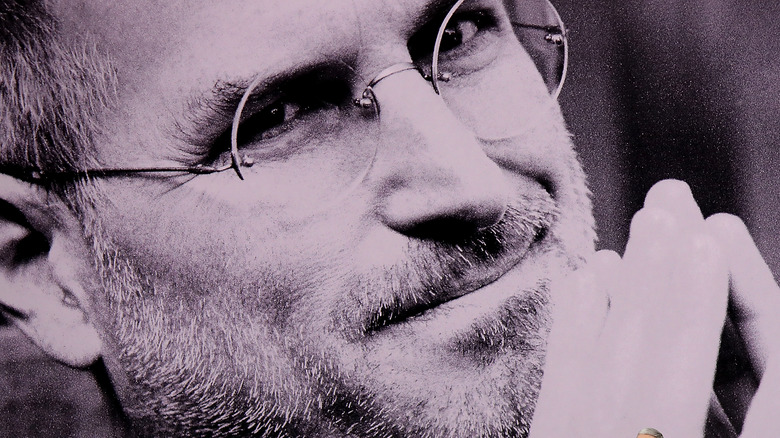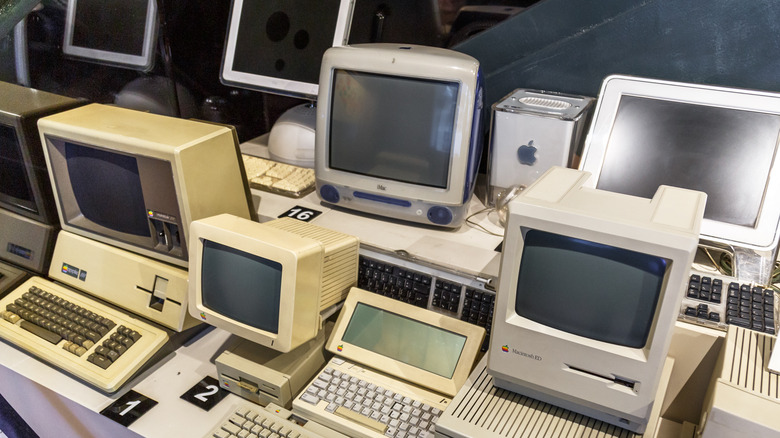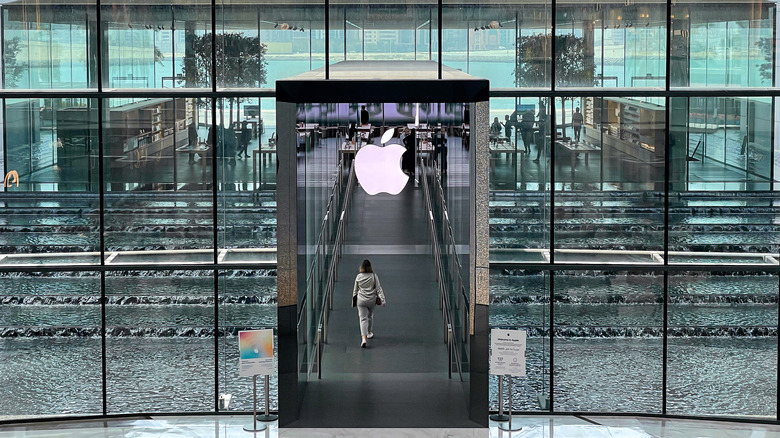How Steve Jobs' 1997 Return To Apple Saved The Company
When Steve Jobs resigned from Apple in 1985, the future was less than auspicious for the now-legendary business magnate (via Wired).
Following Jobs' departure, Apple was largely credited with the creation of the desktop publishing market after combining the Macintosh computer alongside the LaserWriter desktop printer, and PageMaker (now known as Adobe Systems). However, Apple's high hopes of maintaining a 55% profit margin came crashing down after the introduction of IBM clones when PC computers began offering similar functionality at a much lower price point (via Lifewire).
As fate would have it, Apple would acquire Jobs' tech company, NeXT, Inc., in 1996, according to Wired. Marking the return of Jobs to the company he co-founded nearly 20 years earlier, the acquisition of NeXT allowed Jobs to step into the role of the interim CEO in late 1997, with a focus on returning profitability to Apple.
With Microsoft dominating the market share, Jobs' ensuing decisions helped Apple go from losing $1.04 billion in 1997 to turning a $309 million profit a year later, according to Entrepreneur, ultimately saving the company. This is how he did it.
Streamlining the saturated product line
According to Walter Isaacson's biography of Jobs (via Entrepreneur), immediately after being named interim CEO, he would order Apple to cancel 70% of the company's redundant product line and restore Apple back to its core ethos of offering personal computers. From this point on, Jobs' plan was to have Apple produce four total products: two desktop computers and two portable devices. Ultimately, the computer and portable device were the same product, with one being marketed for professionals and the other for consumers.
The consumer-based product would see the unveiling of the iconic "i" branding, a move that Steve Jobs stated reflects the device's integration with the internet itself. Just a month later, Apple would receive a cash flow injection of $150 million from long-time rival Microsoft, thus ending the long-time cold war between the two tech giants. The mutually beneficial partnership all but solidified Microsoft's commitment to continue developing software for the Macintosh computer, opening the door for Apple's return to solvency. But the decision to trim the company's fat wasn't limited to the extensive product line Apple featured.
Putting an end to in-fighting among divisions
Revealed by Tim Cook during his deposition in Apple's infamous app store lawsuit with Epic, as reported by Inc, Jobs also downsized Apple's multiple profit-and-loss (P&L) statements. As Cook was explaining the unlikelihood of tracking the App Store's profitability accurately, he revealed the company doesn't track every expense in a traditional way, an idea Job implemented in 1997.
At the time, every business unit at Apple had its own P&L statement, regularly causing in-fighting among the divisions when trying to determine where to allocate costs. With each manager only concerned with their own respective units showing a profit, regardless of the overall health of the company, Jobs made the historic move to eliminate every manager, in addition to creating one P&L statement for the entire company.
In an article explaining the move, Harvard Business Review explains how Apple's commitment to offering the best products would be undercut if short-term profit and cost targets were the criteria for judging the company's success. This allows for the leaders of Apple to focus on what is best for the products, but more importantly, the consumers.
With a streamlined product offering and a shift from focusing on each business unit to the company as a whole, Jobs began laying the groundwork for Apple to begin expanding its product line in the coming years — the very groundwork that would help Apple become the $2 trillion tech juggernaut it is today.


